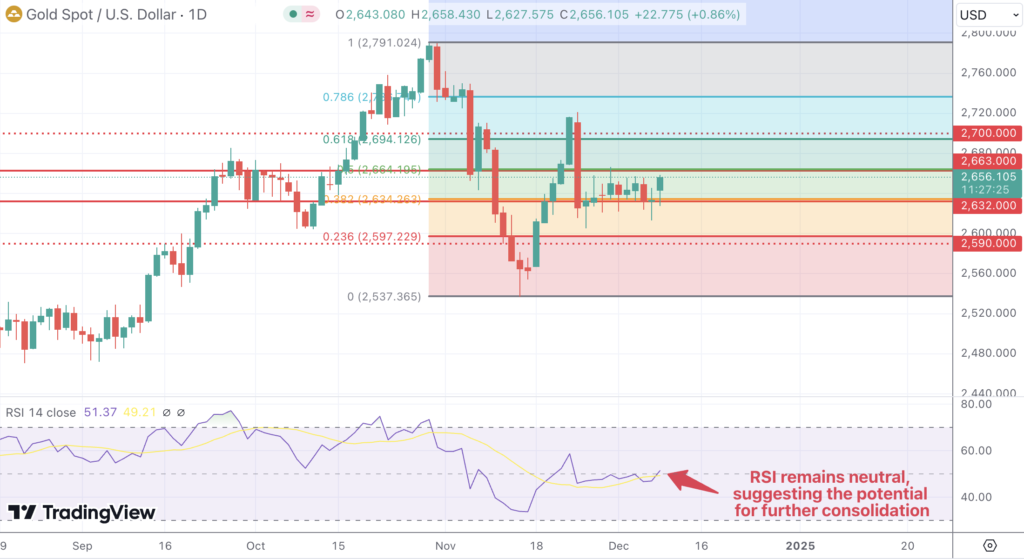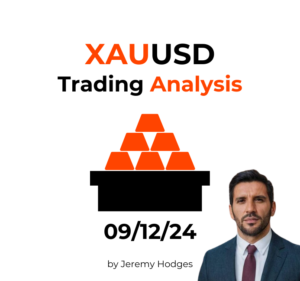Key Takeaways:
- Gold is supported at $2,632, with resistance at $2,663 and $2,680. A move above these levels could open the door to $2,700.
- Momentum indicators suggest consolidation, though the broader uptrend remains intact.
- S. inflation data and Fed policy signals will play a critical role in shaping gold’s near-term direction.
- Persistent geopolitical uncertainties continue to provide a safety net for gold prices, balancing pressures from a firm U.S. dollar and Treasury yields.
Market Dynamics and Recent Performance
Gold (XAU/USD) maintained a modest recovery last week, hovering near $2,650 as persistent global uncertainties and softer U.S. economic data provided support. Despite brief upward momentum, prices struggled to break decisively above the $2,650 barrier due to a firm U.S. dollar and stable Treasury yields. The metal remains caught between safe-haven demand, driven by geopolitical tensions, and profit-taking pressures, with traders carefully assessing the Federal Reserve’s policy outlook amid mixed signals from the U.S. economy.
Technical and Fundamental Influences
Technically, gold has shown resilience, recovering from support around $2,632 after testing this level multiple times over the past two weeks. The 50-day moving average sits close to $2,640, reinforcing this area as a critical floor for the market. Momentum indicators, including the Relative Strength Index (RSI), remain neutral, suggesting the potential for further consolidation. Resistance is prominent at $2,663, with a more significant barrier at $2,680. A sustained break above these levels could trigger a rally toward the $2,700 psychological mark.

On the downside, any break below $2,632 could push gold to test the $2,590 region, where buying interest is likely to emerge, given the broader bullish trend. Fibonacci retracement levels also align near $2,640 and $2,590, adding further technical validity to these levels.
Fundamentally, gold prices remain sensitive to U.S. inflation expectations and the Federal Reserve’s policy direction. With the Fed’s next rate decision approaching, markets are pricing in a pause, which supports gold as a non-yielding asset. However, robust employment data and a resilient U.S. dollar have kept the metal’s upside in check. Geopolitical uncertainties, including tensions in Eastern Europe and the Middle East, continue to underpin gold’s safe-haven demand, preventing sharper declines.
Looking Forward
The upcoming week will be pivotal for gold as traders await U.S. inflation data and central bank commentary. These events will likely determine whether the Fed maintains its current pause or signals further tightening. A dovish tone could reignite bullish momentum in gold, while hawkish signals may lead to another test of support levels.
Market sentiment will also hinge on geopolitical developments and their impact on risk appetite. Should safe-haven flows increase, gold may finally overcome its recent resistance levels and resume its upward trajectory. Conversely, improving global risk sentiment or stronger-than-expected U.S. economic data could dampen its appeal.

